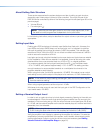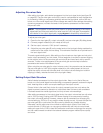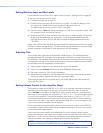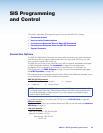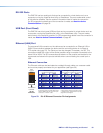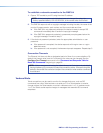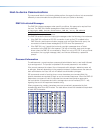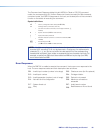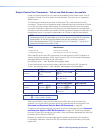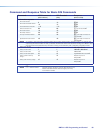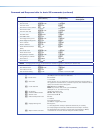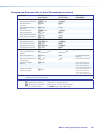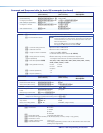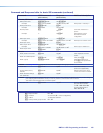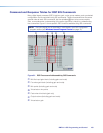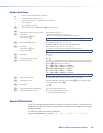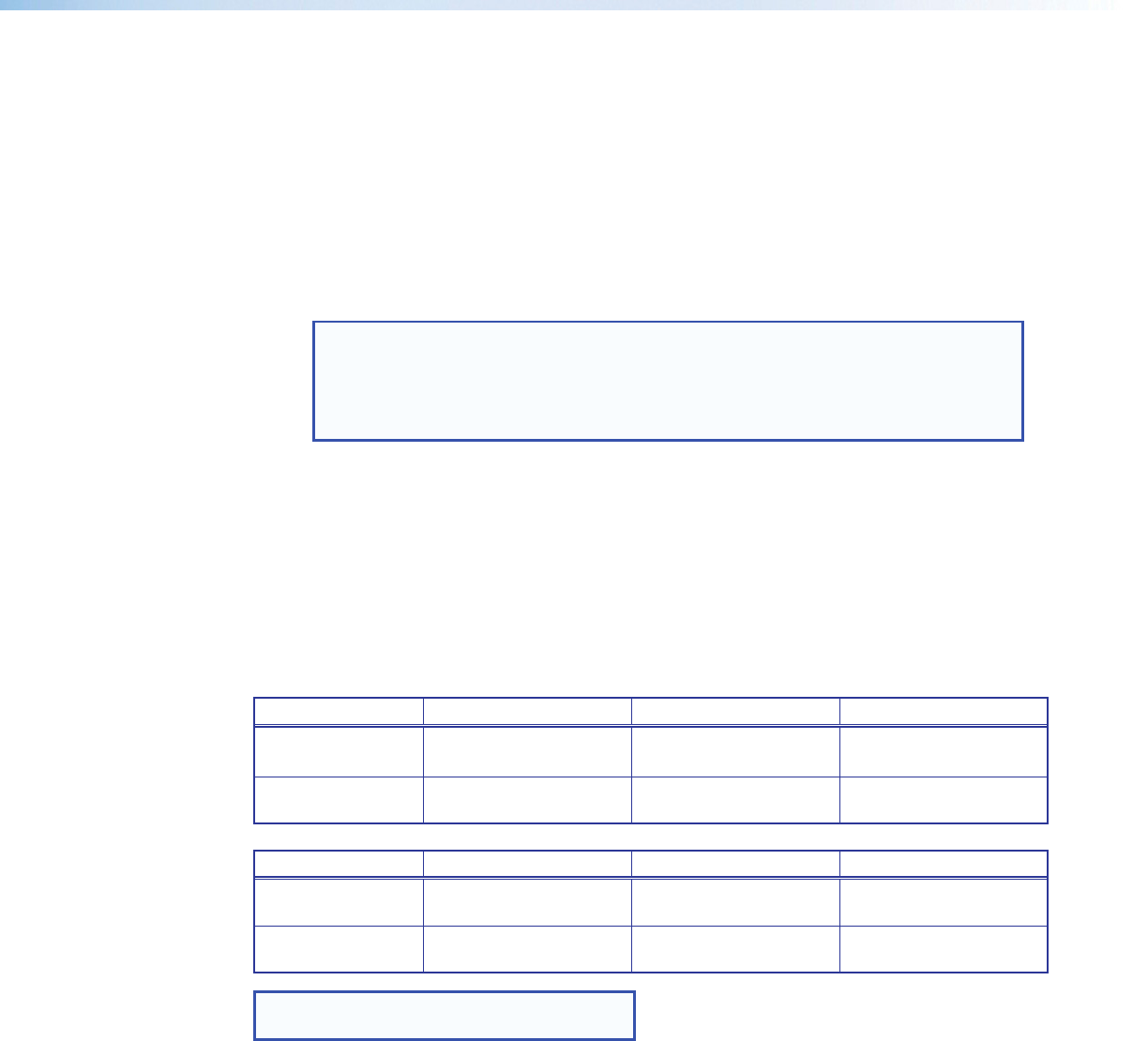
Simple Control Port Commands - Telnet and Web-browser Accessible
Upper and lower case text can be used interchangeably except where noted. Port 23
is default for Telnet. Port 80 is default for Web browser. They both can be mapped to
different ports.
The following commands are for either a Telnet (port 23) or web browser (port80)
connection. There are minor differences when implementing these commands via Telnet
or via URL encoding using a Web browser. All commands listed will work using either
connection method but due to some limitations of the Web browser, the encapsulation
characters must be modified to be certain the Web browser will properly handle them. All
examples are shown in a proper implementation of a Telnet or web browser session.
NOTE: When using Web browsers, some non-alpha numeric characters must be
represented as their hex equivalent such as %xx where xx equal the two character
representation of the hex byte that needs to be sent (for example, a comma ‘,’
would be represented as %2C). Characters such as ‘%’ (percent), ’+’ (plus) and ‘ ‘
(space) should also be encoded in Hex.
Telnet Web Browser
Escape (Hex 1B) W [must not be encoded]
Carriage Return (Hex 0D) Pipe Character (>) [must not be encoded]
When describing the use of SIS commands via a web browser, the [URL] reference is
used to shorten the examples. [URL] would be the full URL of the control interface and
web page reference including all path information
(for example, http://192.168.254.254/mypage.HTML).
To send commands using a web browser, prefix them with the full URL followed by
?cmd= (for example, http://192.168.254.254/mypage.html?cmd=WSF>).
ASCII Hex Unit response
Control Command
(via Telnet)
Esc
X# X@
Command
}
X@
Data
1B
X# X@
Command 0D
X@
Data
response from command
]
Example:
Esc 03RS
}
1*2!
1B 30 33 52 53 0D
31 2A 32 21
OUT 02•IN01•ALL
]
ASCII URL Encoded (Web) Unit response
Control Command
(via WEB)
URL?cmd=W
X# X@
Command >
X@
Data
URL?cmd=W
X# X@
Command >
X# X@
Data
response from command
]
Example:
URL?cmd=W03RS>1*2! URL?cmd=W03RS >
1%2A2%21
OUT 02•IN01•ALL
]
NOTES:
X@
= Input number, 1 through 6
X#
= Output number 1 through 4
Although the DMP64 uses the same structure for SIS commands, there are two
variations. One is the global command structure noted above and documented in the
Command and Response Table for Basic SIS Commands on page98.
The second set of tables uses the command structure outline beginning with Command
and Response Tables for DSP SIS Commands on page103. While using the same
structure of basic SIS commands, they differ in how the software addresses the individual
processor blocks within the DMP64.
Generally, the basic SIS commands are used for global configuration such as setting
IPaddresses, date/time, while the DSP SIS commands allow functionality of the audio
signal chain.
DMP64 • SIS Programming and Control 97



